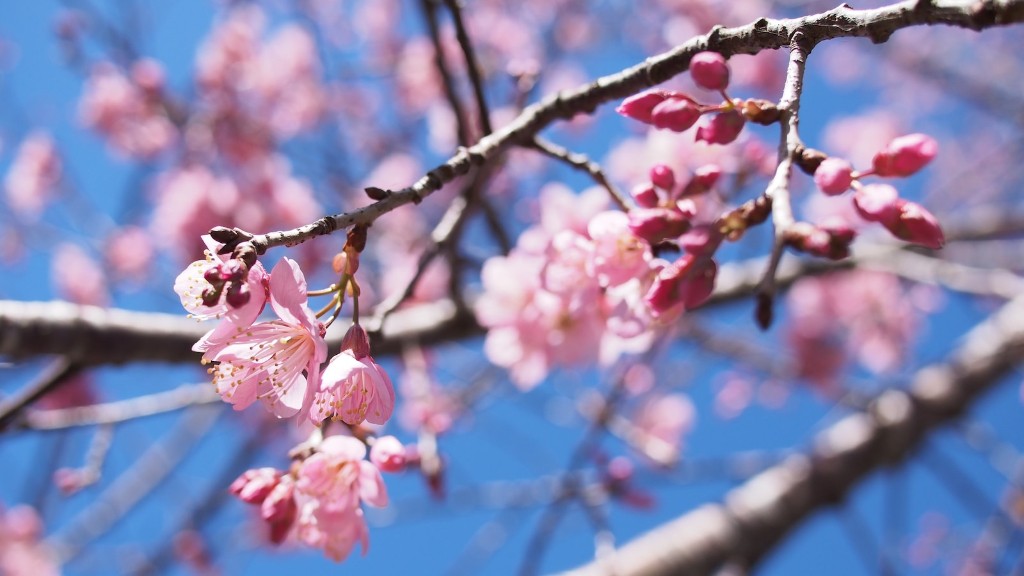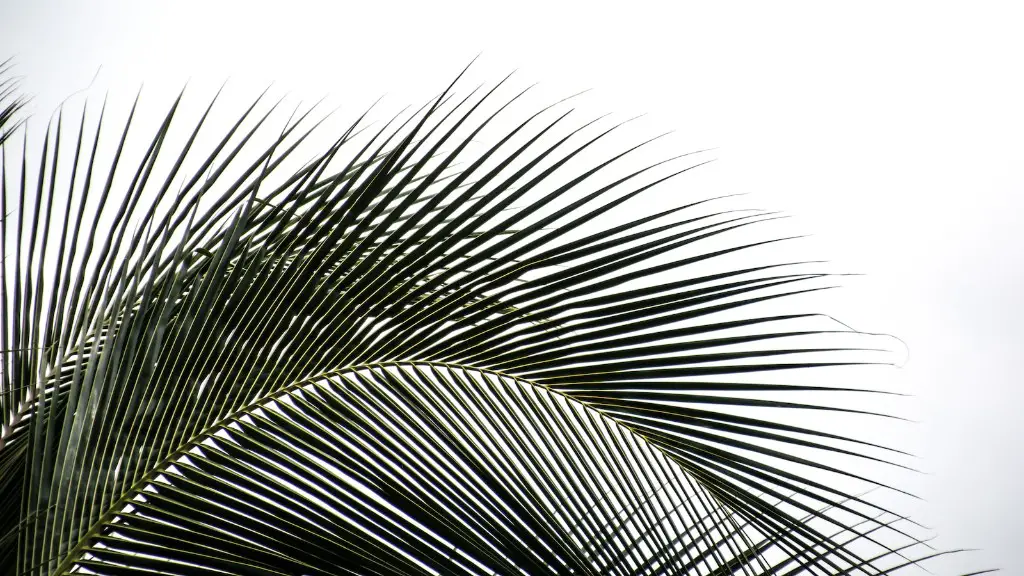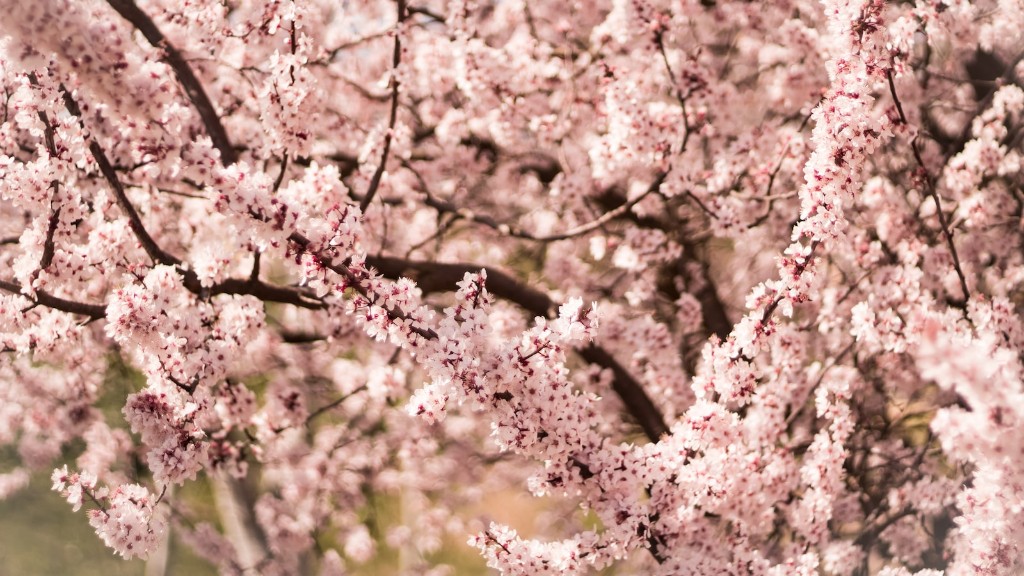Insects
The most common cause of holes in cherry tree leaves are insects. Some of these include caterpillars, mealworms, and sawflies. These pests feed on the leaves of cherry trees, leaving what appear to be small holes in their wake. Some of the symptoms of insect infestation include leaves that are eaten in patches or have holes in them, as well as leaves that have faded or discoloured. Additionally, if the infestation is severe, you may observe a web-like formation on certain areas of your tree. The most effective way to address insect infestation is to apply an appropriate insecticide, such as Bacillus thuringiensis.
Diseases
Cherry tree leaves may also develop holes due to the presence of certain fungal and bacterial diseases. Fungal diseases such as cherry leaf spot, anthracnose and powdery mildew can cause the leaves to become discoloured or spotted, and eventually develop holes. Bacterial diseases, on the other hand, may also cause lesions that develop into holes on the leaves. In order to effectively treat a disease-related infestation, it is important to identify the specific disease so that a targeted treatment can be applied.
Lack of Water
One of the most common causes of holes in cherry tree leaves is a lack of adequate water. When a cherry tree is not receiving enough water, its leaves may become dry and brittle and may eventually develop holes or cracks. In order to prevent this from happening, it is important to make sure that the tree is receiving enough irrigation. Additionally, when watering your cherry tree, it is important to avoid over-irrigation, as this can also cause stress to the tree and result in holes developing in its leaves.
Environmental Factors
In some cases, environmental factors may also contribute to the development of holes in cherry tree leaves. For example, extreme temperatures or drought can cause leaves to become dry and brittle, resulting in holes forming in the leaves. Windy conditions, on the other hand, may cause leaves to become worn down, resulting in holes and ragged edges. To prevent this from occurring, it is important to ensure that your cherry tree is planted in a location that receives adequate protection from strong winds and undesirable weather conditions.
Fertilizers and Chemicals
The application of chemical fertilizers and other soil amendments can also cause damage to cherry tree leaves. When chemicals are applied to soil, they bind to the clay and organic matter, affecting the pH level of soil. This can result in leaves developing holes or becoming discoloured. Therefore, it is important to always use appropriate and safe fertilizers and other soil amendments to minimize the risk of causing damage to your cherry tree’s leaves.
Pruning and Girdling
Pruning and girdling are two other common causes of holes in cherry tree leaves. When a tree is pruned or girdled, there can be a build-up of moisture in the area near the cuts, which can cause the leaves to develop holes. To prevent this from happening, it is important to only prune or girdle your cherry tree when absolutely necessary and make sure to use proper pruning techniques.
Environmental Stress
Environmental stress can also cause leaves to develop holes or become discoloured. Poor soil or air quality, for example, can lead to the leaves becoming dry and brittle, resulting in holes forming in them. Additionally, polluting agents such as smoke, dust and other particles can contribute to the development of holes on the leaves of cherry tree. To minimize the risk of environmental stress to your trees, it is important to keep the area around them free of pollution and adverse weather conditions.
Avoidance of Pests and Diseases
One of the best ways to prevent holes in cherry tree leaves is to make sure to protect the tree from pests and diseases. To do this, it is important to regularly inspect the leaves and branches of your tree for pests and diseases and to take action immediately when necessary. Additionally, you should always use appropriate insecticides and fungicides to protect your trees from pests and diseases.
Maintain Optimal Growing Conditions
The best way to prevent holes from appearing in your cherry tree leaves is to make sure that the tree is receiving all of the necessary elements for optimal growth. This includes making sure that the tree is receiving enough water and that the soil is of the appropriate pH level. Additionally, it is important to ensure that the tree is planted in a location that is protected from adverse weather conditions and polluting agents.
Seasonal Conditions to Watch Out For
Cherry trees are particularly susceptible to certain seasonal conditions, such as intense heat, drought and strong winds. These conditions can lead to extreme stress on the tree, resulting in the leaves becoming dry and brittle, and eventually developing holes. To avoid this from happening, it is important to provide your cherry tree with extra care and attention during the warmer months of the year. This includes providing adequate water and protecting the tree from extreme temperatures, wind and other weather conditions.
Provide Nutrients to Your Trees
To ensure that your cherry tree has all of the necessary nutrients for optimal growth, it is important to provide it with supplemental fertilizers. Choose a fertilizer that is specific for cherry trees and use it according to the manufacturer’s instructions. Additionally, you can also supplement the existing soil with organic matter, such as compost or manure, to provide your tree with the necessary nutrients.
Regular Inspections and Treatment
Regular inspections and appropriate treatments are key to ensuring that your cherry tree is not suffering from any pests or diseases. If you notice any signs of infestation, it is important to have it identified and treated immediately. Additionally, you should look out for any environmental stressors, such as wind, heat or drought, that may be affecting your tree and take steps to minimize the impact of these conditions.
Know Your Trees
Finally, one of the best ways to ensure that your cherry tree is healthy and free of holes is to familiarize yourself with it. Learn about the different pests and diseases that may be affecting your tree, as well as the environmental conditions that may be causing it to suffer. Additionally, pay attention to the signs of distress that your tree may be exhibiting, such as wilted leaves or discolouration, and take action if necessary. By doing all of this, you can ensure that your cherry tree is happy and healthy for many years to come.



